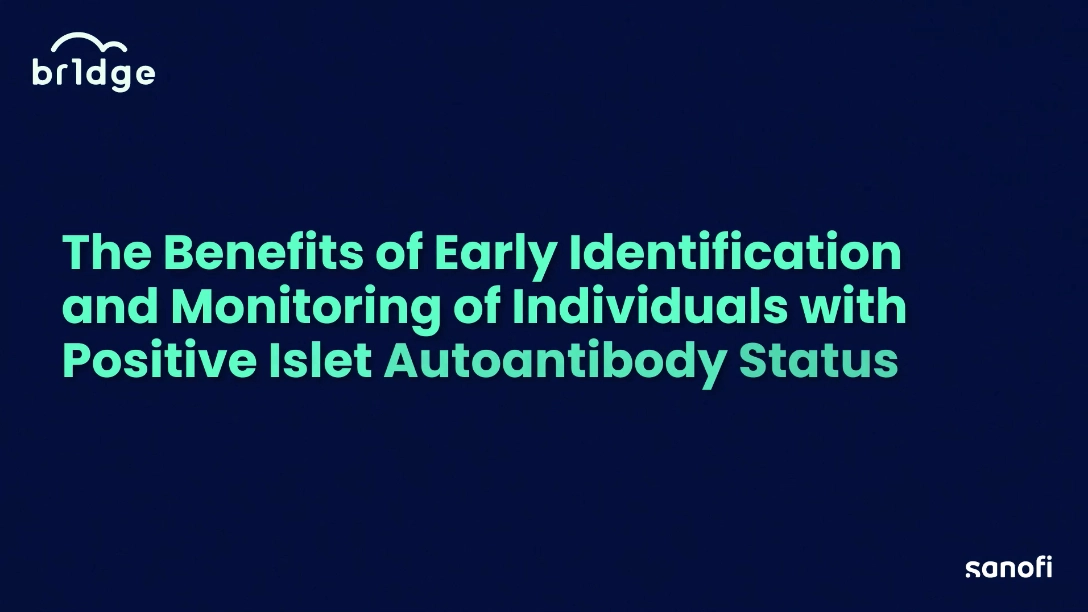- Resource
- BR1DGE
- Monitoring
- Video
Early Identification and Monitoring of Presymptomatic Autoimmune T1D
Early identification of presymptomatic T1D and subsequent monitoring and education has a range
of potential benefits

Learning Objectives
- Explore the benefits of early identification and monitoring of individuals with presymptomatic autoimmune type 1 diabetes (T1D)
- Understand how early identification via screening and monitoring may reduce the impact of autoimmune T1D on individuals
- Discover how early identification may help individuals and caregivers prepare for the onset of Stage 3 T1D

Summary
Individuals with autoimmune type 1 diabetes (T1D) can be identified early via islet autoantibody screening.
International Consensus Guidance offers recommendations on who to monitor, how to monitor them, and how often. Early identification provides an opportunity for education and time to prepare, which can reduce the risk of diabetic ketoacidosis (DKA) and hospitalization.
Screening programs in the US and Germany have shown that early identification may lower the risk of DKA at diagnosis compared with unscreened individuals.
By avoiding DKA at diagnosis, individuals with Stage 3 T1D may experience better long-term outcomes.
Data from the DAISY study have shown that screened individuals were less likely to be hospitalized and spent less time in hospital than unscreened individuals. Data from the Fr1da study suggest that children who are screened and monitored may have milder diabetes at clinical onset of Stage 3 T1D compared with unscreened children.
MAT-GLB-2405126-1.0 - 04/2025
